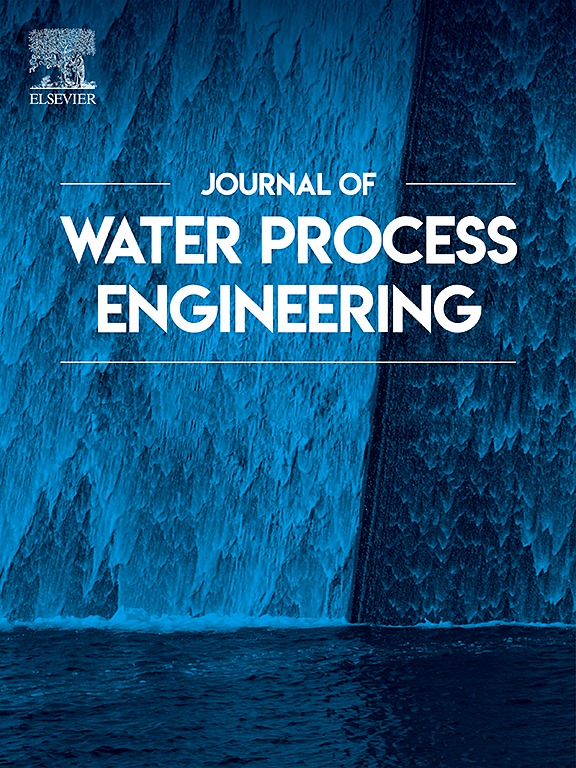Bio-based solvents for polyphenol recovery: Transforming olive mill wastewater into high-value resources
IF 6.3
2区 工程技术
Q1 ENGINEERING, CHEMICAL
引用次数: 0
Abstract
Spain generates approximately 1.8 million m3 of olive mill wastewater (OMW) annually, posing significant environmental and economic challenges while presenting opportunities for resource recovery. This study investigates the technical feasibility of extracting high-value polyphenols from OMW using bio-based solvents, supporting circular bioeconomy initiatives. Three OMW types—washing (W), centrifuge (C), and storage pools (B)—were sampled at the start and end of the olive harvesting campaign. Polyphenols were extracted using ethyl acetate (EA), 2-methyltetrahydrofuran (2-MeTHF), and cyclopentyl methyl ether (CPME) at varying solvent-to-wastewater ratios and extraction times. The study quantified total polyphenols, flavonoids, antioxidant capacity, and key polyphenols in both wastewater and extracts, alongside evaluating solvent recyclability. Results showed that the highest polyphenol content was found in storage pool wastewater (884 mg GAE L−1 on average). EA and CPME achieved the highest total polyphenol extraction efficiency (41.5 and 38.5 % respectively), while 2-MeTHF was the most efficient for flavonoids (42.8 %). CPME demonstrated the highest solvent recovery (55 %), highlighting its sustainability. Hydroxytyrosol and tyrosol were the predominant polyphenols across all wastewater types, followed closely by vanillin. EA and 2-MeTHF extracts exhibited strong antioxidant capacity (up to 73.7 %). These findings underscore the potential of bio-based solvents for efficient and environmentally friendly polyphenol recovery, promoting sustainable waste valorization and circular economy practices in the olive oil industry.

求助全文
约1分钟内获得全文
求助全文
来源期刊

Journal of water process engineering
Biochemistry, Genetics and Molecular Biology-Biotechnology
CiteScore
10.70
自引率
8.60%
发文量
846
审稿时长
24 days
期刊介绍:
The Journal of Water Process Engineering aims to publish refereed, high-quality research papers with significant novelty and impact in all areas of the engineering of water and wastewater processing . Papers on advanced and novel treatment processes and technologies are particularly welcome. The Journal considers papers in areas such as nanotechnology and biotechnology applications in water, novel oxidation and separation processes, membrane processes (except those for desalination) , catalytic processes for the removal of water contaminants, sustainable processes, water reuse and recycling, water use and wastewater minimization, integrated/hybrid technology, process modeling of water treatment and novel treatment processes. Submissions on the subject of adsorbents, including standard measurements of adsorption kinetics and equilibrium will only be considered if there is a genuine case for novelty and contribution, for example highly novel, sustainable adsorbents and their use: papers on activated carbon-type materials derived from natural matter, or surfactant-modified clays and related minerals, would not fulfil this criterion. The Journal particularly welcomes contributions involving environmentally, economically and socially sustainable technology for water treatment, including those which are energy-efficient, with minimal or no chemical consumption, and capable of water recycling and reuse that minimizes the direct disposal of wastewater to the aquatic environment. Papers that describe novel ideas for solving issues related to water quality and availability are also welcome, as are those that show the transfer of techniques from other disciplines. The Journal will consider papers dealing with processes for various water matrices including drinking water (except desalination), domestic, urban and industrial wastewaters, in addition to their residues. It is expected that the journal will be of particular relevance to chemical and process engineers working in the field. The Journal welcomes Full Text papers, Short Communications, State-of-the-Art Reviews and Letters to Editors and Case Studies
 求助内容:
求助内容: 应助结果提醒方式:
应助结果提醒方式:


